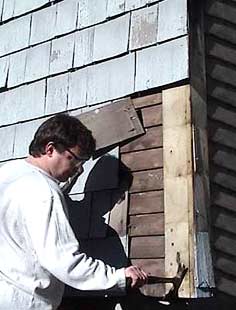
 |
||||||




Working on the Past ...QUIZ
This quiz is offered as a quick review of information contained in the various sections of the web site, with a focus on the four treatment approaches in The Secretary of the Interior's Standards for the Treatment of Historic Properties. Please choose only one answer per question. If you pick the wrong answer you may try again, but your answer will be counted as incorrect. You can always hit the "Reset" button at the bottom of the page to retake the quiz and get a new grade.
How the quiz is graded:
Each answer is worth 10%. After you have completed all of the questions,
please click the Grade the Quiz button at
the bottom of the page. The number you see is a percentage of all the
correct answers, so 100% is a perfect score. Good luck!
--------------------------------
--------------------------------